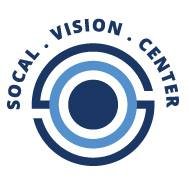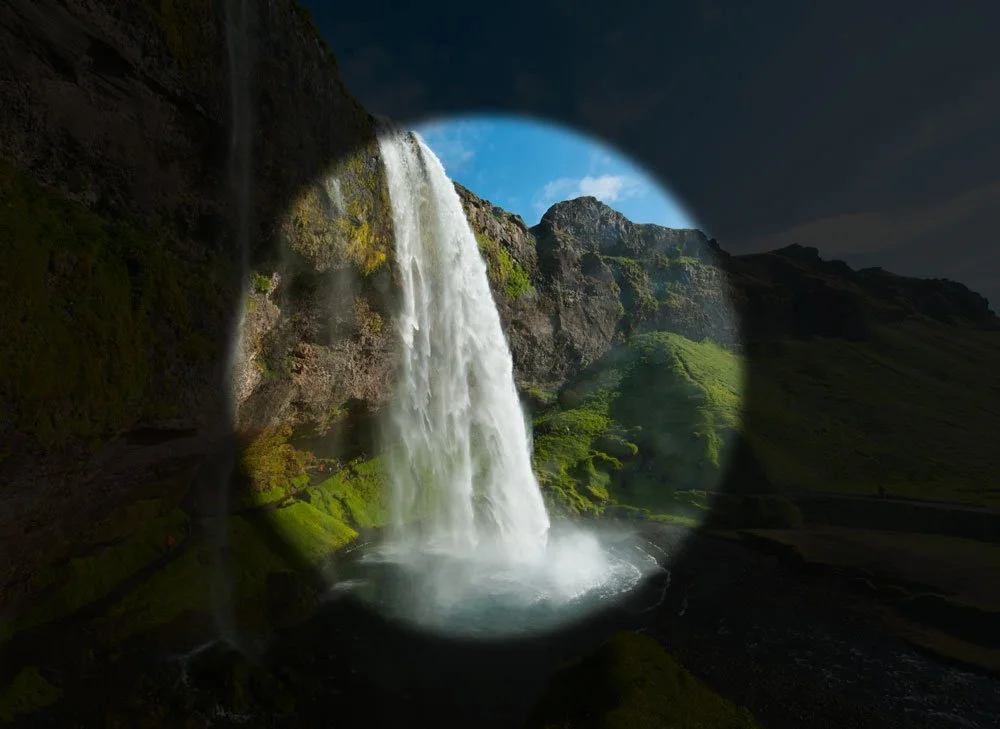
Glaucoma
What Is Glaucoma?
We successfully treat glaucoma for our patients. Please make an appointment today to learn more about how we can help you or your loved ones.

What is Glaucoma?
Glaucoma is a serious visual condition in which pressure builds up inside the eye, damaging the optic nerve. The condition tends to get worse with time and can eventually lead to blindness.
Glaucoma, often called the silent thief of sight, is a disease of the optic nerve, which has little or no symptoms. The eye needs a healthy optic nerve in order for a person to see. It is the optic nerve that relays images and information to the brain. If the disease is not caught and treated in time, blindness may occur due to optic nerve damage. It is estimated that up to half the people affected with glaucoma are unaware of it. However, it is easily diagnosed with a routine ophthalmic exam. Glaucoma as of yet, has no cure and loss of vision cannot be reversed. Treatment of the disease can and will stop it from progressing. Since this is a chronic disease, monitoring must be maintained for life. If you are suffering from glaucoma, our Glendale ophthalmologist is happy to meet with you and determine a course of action for glaucoma surgery and treatment. We serve the communities of Glendale, Pasadena, Burbank, La Canada, Flintridge, La Crescenta, Montrose, and other neighboring cities.
Glaucoma is divided into two broad categories based on the anatomy of the angle where the trabecular meshwork is found. They are open-angle and closed-angle.
Open-angle Glaucoma
Over 90% of glaucoma is open angle, meaning the drainage system is open and not blocked by other structures. Within this category, the most common form is primary open-angle glaucoma. It is not uncommon for the eye pressure to be elevated which is thought to cause the damage to the optic nerve. However, one may have glaucoma and damage to the optic nerve despite having seemingly low eye pressures. There are several secondary glaucomas such as pseudoexfoliation or pigmentary glaucoma which are treated very similarly to primary glaucoma.
Closed-angle Glaucoma
This category of glaucoma is not as common but may be devastating if acute glaucoma ensues. Closed angle refers to the angle or drainage system of the eye which can get blocked by other structures in the eye, most commonly the iris. Some eyes have a particular anatomy such that the iris comes forward and blocks the drainage system. Since fluid is continually being produced and drained from the eye, if the drainage becomes blocked, the eye pressure can increase dramatically within a few hours and can cause havoc in the eye.
-
The eye needs pressure to maintain its shape and function. Abnormal increases in eye pressure can result in glaucoma. Everyone is at risk for glaucoma, but there are some factors that may increase one’s chance of developing it, including:
Anyone over the age of 60.
Family history of glaucoma.
African Americans, especially over the age of 40.
Other risk factors include high eye pressure, optic nerve abnormalities, and an abnormally thin cornea—all of which can be detected during a complete eye exam. If you have any of these risk factors, call our Pasadena ophthalmologist to schedule an eye exam today!
-
At first, glaucoma produces no symptoms, but as it progresses, a person may notice problems with peripheral vision. By that point, significant optic nerve damage has occurred. Blind spots will slowly develop in the peripheral or side vision, and they will gradually increase as the disease progresses. Eventually, glaucoma will cause center vision loss, which will result in blindness if left untreated.
But you should seek medical attention if you start to experience regular intervals of intense eye pain, nausea or vomiting, sudden onset of visual disturbances, blurred vision, halos around lights, or reddening of the eye(s).
The goal of glaucoma management is to identify the condition before any vision loss occurs. Routine, comprehensive eye exams are the best way to detect glaucoma.
-
Detecting glaucoma before symptoms are present is of utmost importance. A routine and comprehensive checkup is the best way to identify glaucoma before the onset of symptoms.
-
Medication can be used in the form of drops to help lower the eye pressure. The drops need to be administered once or multiple times a day depending on the medication in order to be effective. Compliance or remembering to take the medications is one of the drawbacks of this option because studies have shown that a large percentage of people tend to forget to take them. These medications may also have side-effects.
Treatment of Open-Angle Glaucoma
-
Laser or Selective Laser Trabeculoplasty (SLT) is a good option because it is a safe option with little or no side effects. The laser accomplishes what medications do and that is to lower the eye pressure. The laser works in most people however is some individuals, it has little or no effect.
This laser procedure is performed in the office setting. The eye is numbed and a lens is placed on the eye to direct the beam of laser to its proper place, which is the trabecular meshwork or the drainage system of the eye. It takes only a few minutes to perform the laser. During the treatment, you will feel no pain although some patients may occasionally feel a slight discomfort. You may see a green flash of light during the treatment process.
The mechanism of action of the laser is the following: The SLT employs a specific wavelength of energy in a very short duration of time – 3 nanoseconds to be exact. This burst of energy is absorbed only by melanin containing or pigmented cells found in the drainage system while the surrounding tissues are unaffected. The body clears these pigmented cells and the overall effect is to open the drain. More fluid is able to drain out of the eye so the overall eye pressure goes down.
The full effect of SLT sometimes takes a few weeks to a month to kick in and a follow up visit will determine how effective the SLT was.
One of the main benefits of SLT is that it is not associated with systemic side effects, unlike drops which are absorbed by the eye as well as the body. Compliance with medications or having to remember to take the drops is not an issue with the laser since it works on its own 24 hours a day. This procedure is covered by Medicare and most health insurances.
The laser will generally last for several years and may be repeated in the future if the effect wears off.
SLT works in most kinds of glaucoma.
-
Two Microinvasive surgery treatments include Canaloplasty and IStent procedure.
iStent is a device approved by the FDA available for glaucoma patients undergoing cataract surgery. The IStent bypasses the area of resistance that causes the eye pressure to increase thereby lowering the pressure after the procedure.
The primary cause of elevated intraocular pressure (IOP) in patients with open-angle glaucoma is abnormality of the trabecular meshwork. With up to 75% of resistance to outflow located in the juxtacanalicular tissue, the iStent safely improves outflow by creating a patent bypass between the anterior chamber and Schlemm’s canal. iStent improves outflow with a single bypass.
The Istent implantation is safe and very effective in lowering the pressure. It’s the smallest medical device to be implanted in the human body measuring only 1 mm in length. The dimensions of iStent are customized to optimize fluid outflow while fitting naturally within Schlemm’s canal. Its three retention arches ensure secure placement.
Each iStent system is comprised of a surgical-grade nonferromagnetic titanium micro-bypass stent so it is safe if an MRI is performed in the future.
-
Glaucoma surgery is necessary in those patients where medications and laser have not been effective enough. It is reserved for those with more advanced or difficult to control glaucoma. Our Glendale ophthalmologist can determine if glaucoma surgery is necessary for you, or if you can find relief with other treatment options. Come in today to learn more about how SoCal Vision Center can help you.
A glaucoma drainage device (GDD) is implanted, which channels aqueous fluid from the anterior chamber to a reservoir.
The procedure is done in an operating room with mild sedation and local anesthesia, so that the procedure will have no to little pain.
After an incision is made in the conjunctiva (outermost surface of the eye) the device is placed in the proper place. A tiny opening into the eye is made and a tube, which is connected to the drainage device, is inserted into the opening so that the aqueous fluid may be drained out of the eye. When the fluid is drained out of the eye, the eye pressure will decrease and bring the disease under control.
-
The Xen gel stent is a flexible tube with a 45-micron lumen. The Xen lowers the intraocular pressure by creating a permanent drainage shunt from the anterior chamber to the subconjunctival space through a scleral channel. The Xen gel stent is a less invasive glaucoma surgery. As with all glaucoma surgeries, the goal is to safely lower the intraocular pressure and prevent future damage to the optic nerve.
The preferred treatment for closed or narrow angle glaucoma is laser. This particular kind of laser called peripheral iridotomy, is curative and will deepen the angle where the drainage system was initially blocked or narrow. Sometimes people who have closed-angle glaucoma will develop a secondary form of open-angle glaucoma. In that case any of the treatment options for open angle glaucoma can be started.
SoCal Vision Center offers our Glendale patients glaucoma surgery that can abate these symptoms.


